What happened to Francine Frost?
By Jeff Carlton
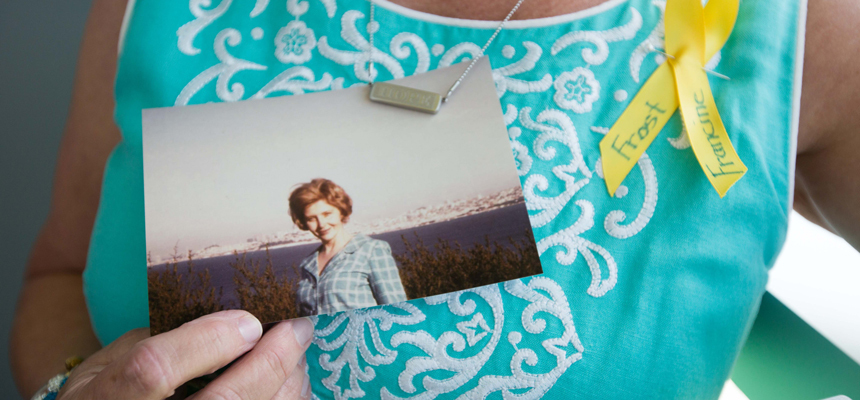
On the night of Feb. 16, 1981, Francine Frost went grocery shopping in Tulsa, Okla., and was never seen again.
Other than her car keys, found dangling from her car door in the grocery store parking lot of a Skaggs Alpha Beta, there was no trace of this 44-year-old nurse, wife and mother of two.
“I’ll never forget the phone call, the panic, the disbelief,” said her daughter, Vicki Frost Curl, now 59. “You don’t know what to do.”
A missing persons report from the Tulsa Police Department estimated that Francine Frost, wearing a plaid shirt and denim skirt, had disappeared sometime between 8:30 p.m. and 4 a.m. But there were no witnesses, no leads and little evidence.
For the Frost family, there was almost no hope.
“We didn’t know anything. Not one thing,” Curl said. “It was as if she absolutely vanished.”
It would remain that way for more than 30 years – until 2014. That’s when some answers would finally arrive thanks to NamUs (pronounced Name Us), the National Missing and Unidentified Persons System, based at UNT Health Science Center and managed through the UNT Center for Human Identification (UNTCHI).
With funding and oversight from the National Institute of Justice, the Center for Human Identification since 2011 has managed and expanded NamUs, a national clearinghouse for missing person cases, unidentified bodies, unidentified living individuals and unclaimed bodies. Through UNTCHI, NamUs provides data management, analytical and investigative support, and access to forensic resources for missing and unidentified cases at no cost to investigating agencies and family members to assist in thousands of unsolved cases.
NamUs allows criminal justice personnel – such as detectives, medical examiners and coroners – access to secure online databases containing biometric information, such as fingerprint cards and dental X-rays, as well as other details useful in identifying individuals.
What makes NamUs unique is that it also allows family members and the general public to access information such as tattoos, body markings, clothing and jewelry to assist in cases.
“It’s a one-of-a-kind system,” said BJ Spamer, Director of Forensic and Analytical Services for NamUs. “The public can see enough details to make connections between cases – and we have had tips from members of the public that have led us to help close cases.”
It was just such a tip that would bring some answers to Curl, 33 years after her mother disappeared.
“If it wasn’t for NamUs,” Curl said, “we would never have gotten my mother back.”
A tragedy compounded
The early 1980s, says Curl, “were an extraordinarily unfortunate time to disappear.” There was no Internet, no social media, no easy way to get the word out about a lost loved one.
So in the ensuing years, the Frosts did what they could. They hired a private investigator. They cooperated with law enforcement agencies. They convinced a local TV station to air a report. And they fruitlessly tried to get national programs such as “Unsolved Mysteries” and “The Oprah Winfrey Show” interested.
“That was all that was available then,” Curl said. “You’re constantly trying to figure out what to do and how to find her.”
As time passed with no progress, the Frost family played the last cards still available to them: tracking reports of serial killers through the news media and using a contact in Oklahoma law enforcement to make sure Francine Frost’s file was up-to-date in the National Crime Information Center (NCIC). At the time, it was one of the few national resources linking law enforcement agencies to one another.
Fifteen months after Francine vanished, the Frosts suffered another tragedy. Karen Frost, who was Francine’s youngest daughter and Vicki’s little sister, took her own life. She was 20 years old. Her sister says Karen was depressed and unable to cope with her mother’s disappearance and likely death.
For more than three decades after this double heartbreak, Curl still couldn’t bear to look at photographs of her mother or her sister.
“I would try to put up pictures of them around the house,” she said. “I would try, but I just couldn’t do it.”
Helping find answers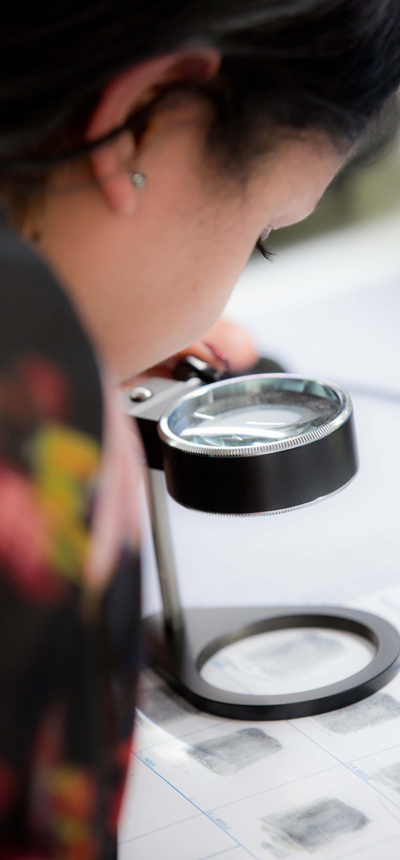
By 2005, authorities had identified key gaps in cases involving missing persons and unidentified remains: a lack of access to database information for law enforcement, medical examiners, coroners, forensic scientists, victim advocates and families.
There were reporting challenges as well. By law, missing cases involving juveniles must be reported. But there was no such requirement or centralized database for adult cases. Because only a few states required missing person reports on adults, there was a low rate of reporting to NCIC.
The National Institute of Justice (NIJ) designed NamUs to fill these gaps, originally creating two online, searchable databases – one for unidentified persons and one for missing persons. Over time, NamUs would add other resources, such as fingerprinting analysis and forensic odontology. Additional forensic services are provided to NamUs stakeholders through the UNTCHI Missing Persons DNA Laboratory and Laboratory of Forensic Anthropology.
Today, there are more than 13,000 open missing person cases and 11,000 open cases involving unidentified human remains entered into the NamUs database. NamUs has assisted in solving nearly 1,700 missing person cases and nearly 1,200 unidentified person cases.
In recent years, NamUs has begun a nationwide series of “Missing” events across the country. Family members are encouraged to bring police reports, X-rays, dental information, fingerprint records or other documents related to their missing loved one for entry into the NamUs database. They also can provide DNA samples that can be used to help identify unknown remains.
At the “Missing in North Texas” event held in Fort Worth in June, more than a dozen families came armed with documents, photos and hope. They included the parents and spouse of Brandon Lawson, missing since his truck ran out of gas on a 2013 drive from San Angelo to Abilene. Also there was Glenn and Cynthia Smith, whose daughter Amber Kidd struggled with mental illness and disappeared in the Dallas area in 2015.
“These families don’t know if their loved one is dead or alive or being harmed,” Spamer said. “It’s horrific to go through life not knowing one way or the other. I don’t think we ever help these families get closure. But we do help them get some answers.”
A miracle breakthrough
After more than three decades with no progress on the Francine Frost case, a breakthrough came in August 2013. An Oklahoma medical examiner who works closely with NamUs was changing offices and moving furniture when she came across a 1983 autopsy report for unidentified remains found in Muskogee County, Okla.
In January of 1983, partial remains of a middle-aged woman had been discovered 60 miles outside of Tulsa. Tattered remains of her clothing, including a plaid shirt and denim skirt, were noted in the report.
After stumbling upon the file during her office move, the medical examiner entered the information into the unidentified persons section of the NamUs database. Using those details, Carl Koppelman, a private citizen searching the NamUs database, connected the new unidentified person entry to Frost’s older missing person entry, also in the NamUs database. He then posted the information to the online forum Websleuths.
Frost’s grandson Cory, who knew his grandmother as a young boy, said he would obsessively search the Internet for clues about her. In December 2014, he came across Koppelman’s post linking the unidentified remains entry to Frost’s missing person entry.
The family was finally getting some answers.
“If it wasn’t for NamUs having this system in place, no one would ever have linked the report of the unidentified woman to my mother,” Curl said.
The unidentified woman had been buried in an unmarked pauper’s grave in Muskogee County in 1983. The remains were exhumed, and a DNA test and dental records confirmed her identity. Frost was reburied in McPherson, Kan., near where her daughter and grandsons now live.
Her mother’s end was tragic, an unsolved killing that has resonated across generations. But Curl says the discovery of her remains after three decades, thanks to NamUs, is astonishing.
Curl now visits the gravesite regularly as part of her daily walking routine. And when she gets home, she looks at newly displayed photos of her mother and sister that were once too painful to see.
“We call it a miracle,” Curl said. “It’s changed my life. I visit the cemetery all the time. I know where she is now.”
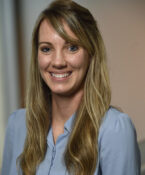
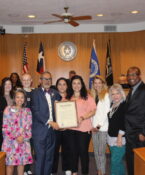

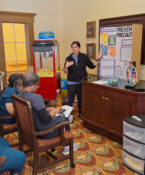

Social media